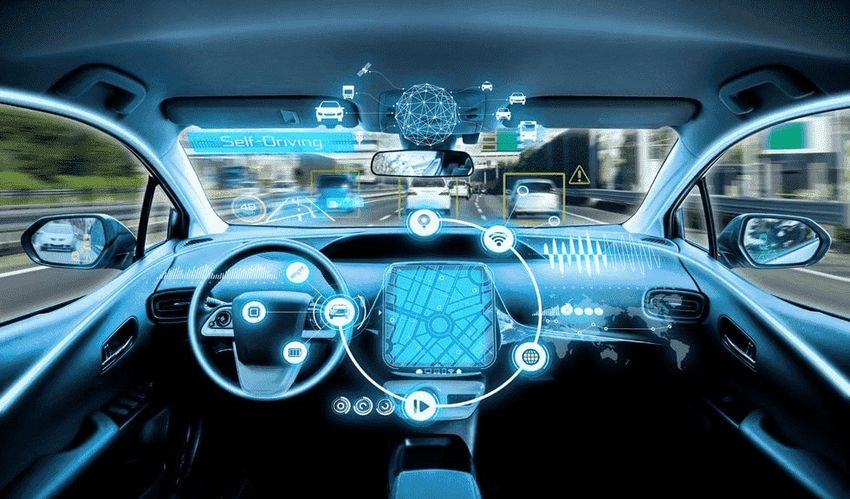Imagine getting into a car, setting your destination, and then sitting back while the car drives itself. Sounds like science fiction, right? Well, thanks to Artificial Intelligence (AI), self-driving cars are already a reality!
But how do these autonomous vehicles “see” the road, make decisions, and avoid accidents? Let’s dive into the world of AI-powered self-driving cars! 🚀
1. How Do Self-Driving Cars Work? 🤖🚦
Self-driving cars use AI, sensors, and advanced algorithms to analyze their surroundings, make decisions, and drive safely. Here’s a simple breakdown:
Step 1: Sensing the Environment 🌍
Autonomous vehicles are packed with sensors that constantly scan the surroundings. These include:
🔹 Cameras 📷 – Detect objects, traffic lights, lane markings, and signs.
🔹 LiDAR (Light Detection and Ranging) 🌟 – Uses laser beams to create a 3D map of the surroundings.
🔹 Radar 📡 – Measures distances and detects objects in all weather conditions.
🔹 Ultrasonic Sensors 🔊 – Helps with parking and detecting obstacles up close.
These sensors act like the car’s “eyes”, helping it “see” everything around it.
Step 2: AI Processing & Decision Making 🧠
The AI system inside a self-driving car acts as the “brain”, analyzing data from sensors in real time. It:
✅ Identifies objects (pedestrians, cyclists, other cars) 🚶🚲🚗
✅ Predicts movements of other vehicles and people 🚦
✅ Decides the best path to take and avoids obstacles 🛣️
✅ Follows traffic laws (speed limits, stop signs, signals) 🚥
This is done using Machine Learning (ML) and Deep Learning, where the car improves over time by learning from vast amounts of driving data.
Step 3: Taking Action (Control System) 🎮
Once AI makes a decision, the car executes it through actuators (like a driver pressing pedals or turning the wheel).
✔️ Accelerating 🚀
✔️ Braking 🛑
✔️ Steering 🔄
This allows the vehicle to move smoothly and safely.
2. The 5 Levels of Autonomous Driving 🏎️
Not all self-driving cars are fully autonomous. There are 5 levels of automation:
🔵 Level 0 – No Automation
The human driver controls everything. No AI assistance.
🟢 Level 1 – Driver Assistance
Basic AI features like adaptive cruise control and lane-keeping assist. The driver must still be alert.
🟡 Level 2 – Partial Automation
The car can steer, accelerate, and brake by itself, but the driver must be ready to take over (e.g., Tesla’s Autopilot).
🟠 Level 3 – Conditional Automation
The car can drive itself under certain conditions, but human intervention is needed in tricky situations.
🔴 Level 4 – High Automation
The car can fully drive itself in specific areas or conditions, but a human can still take control.
🟣 Level 5 – Full Automation (No Human Needed!)
The vehicle drives completely on its own with no steering wheel or pedals! 🚘
Most self-driving cars today are at Level 2 or Level 3, but companies like Tesla, Waymo, and Cruise are working toward Level 4 and 5 automation.
3. Key AI Technologies Behind Self-Driving Cars 🛠️
Self-driving cars rely on cutting-edge AI technologies, including:
🔹 Computer Vision 👀
- Helps cars “see” the road, read signs, and detect objects.
- Uses deep learning models trained on massive amounts of driving data.
🔹 Sensor Fusion 🛰️
- Combines data from cameras, LiDAR, radar, and sensors to create a detailed map of the environment.
🔹 Deep Learning & Neural Networks 🧠
- AI learns from millions of hours of driving data to improve decision-making.
- Uses Convolutional Neural Networks (CNNs) and Recurrent Neural Networks (RNNs) for object recognition and prediction.
🔹 Reinforcement Learning 🎮
- AI learns through trial and error, just like humans.
- Helps the car improve its driving skills over time.
4. Challenges and Limitations 🚧
Despite rapid advancements, self-driving cars still face challenges:
🔴 Weather Conditions 🌧️ – Rain, fog, and snow can make it hard for sensors to “see” clearly.
🔴 Pedestrian Behavior 🚶 – AI struggles to predict sudden human movements.
🔴 Road Hazards 🏗️ – Construction zones, potholes, and unexpected obstacles can confuse AI.
🔴 Ethical Dilemmas ⚖️ – If a crash is unavoidable, who should the AI protect?
AI must overcome these challenges before full automation becomes mainstream.
5. The Future of Self-Driving Cars 🚀
🚗 By 2030, self-driving cars could dominate roads, reducing accidents and traffic congestion. Some key developments:
✅ AI-powered Smart Cities 🏙️ – Traffic lights that communicate with self-driving cars.
✅ Robotaxis & Autonomous Public Transport 🚌 – No need for human drivers.
✅ Safer Roads 🛣️ – AI could eliminate human errors, reducing car crashes by up to 90%!
But will people trust AI enough to give up driving? 🤔
Conclusion: Are You Ready for the Future of Driving? 🚘
Self-driving cars are no longer science fiction—they’re already on our roads, powered by AI, machine learning, and advanced sensors.
While challenges remain, the future looks exciting, safer, and more efficient with AI-powered vehicles!
🔹 Would you ride in a fully autonomous car? Why or why not? Let us know in the comments! 💬


